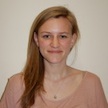When Sally Williams was a teenager, she faced challenges typical for a woman three times her age. Her father’s mother developed vascular dementia and her mother’s mother developed Alzheimer’s disease dementia. “It was hard, as a high school student,” Sally said.
After school, she would read to her father’s mother, and take her out to eat. Going out to a meal required patience and planning, but because “sweet potato fries are her favorite food,” Sally explained, laughing, avoiding restaurants was not an option.
Sally balanced caregiving, family, school, and her love of baking and dancing. In time, she left home to go to college at Wesleyan University in Connecticut. A dancer since she was seven, Sally pursued the art in college along with other academic studies that supported her aspirations to become a doctor. She was no longer a daily caregiver, but the experiences of her grandmothers’ illnesses did not leave her when she moved away for college. The experience of being a caregiver became an inspirational starting point for her dance studies.
In May 2014, she graduated from Wesleyan University with degrees in Dance and in Neuroscience. An active leader and participant in Wesleyan’s dance community, her choreography was often influenced by her science classes as well as by her family, and in the end, her dance thesis focused on the aging process as seen through the lens of her grandmothers’ lives. In Connecticut, she reached back into her teenage years, and began to make sense of the diseases that had affected her and her family’s lives.
Movement as language
Both her grandmothers suffer from memory loss and degrees of aphasia — disordered or abnormal speech. It’s difficult for them to communicate and thus difficult to know how they understand those around them. Aphasia was the first dimension of Alzheimer’s that Sally explored through dance. She thought of movement as a language, and thus translated loss of language to loss of movement.
As she watched her dancers’ movement progress from complex to simple on stage, she considered this first exploration a success. She had only skimmed the surface of depicting dementia, though, and continued to make connections between dance and the workings of the impaired mind.
A thesis emeges
So Sally set to work on her dance thesis. Creating two performance pieces, she first sought to show the pathological side of dementia. The first performance focused on the neural net. The physical manifestation of the disease is often impairment and loss of neuron connections. She had dancers connect and disconnect chains and hooks throughout their movement — the degeneration of a literal web.
The focus of her second performance shifted from the pathological side of dementia to the experiential side of the disease. For instance, attending church with her family each week was an important part of Sally’s life at home. Being in church was difficult for her paternal grandmother; sometimes she yelled out, interrupting during the service and had to leave. Despite her confusion and outbursts, though, she always remembered the Lord’s Prayer.
“If you lost your memory – what’s one thing you could never forget?”
Inspired, Sally asked her dancers: “If you lost your memory – what’s one thing you could never forget?” Her dancers were intrigued, and spent time considering their answers and recording them. Sally cut the recorded poems, songs, and hand games that resulted into the music they would later perform to.
Sally also asked each dancer for a drawn depiction of his or her past Saturday. The entire semester of rehearsal, they redrew that Saturday again and again until it was only a vague copy of the original. The drawings became movements; the movements became series of movements. Their series were shared with the group, and guided by Sally, the group made a patchwork dance of their memories.
The performance
During the spring performance, those drawings were projected from backstage onto the floor of the stage. The piece communicated to both the dancers and to the audience what it feels like to try to remember the past, and what it feels like to forget.
Forgetting was, in fact, an integral part of the dance. It was long and complex, repeating but changing. When dancers forgot their movement, she told them to stare off stage until they remembered again. Sally also encouraged them to look at each other for reminders — a practice rarely condoned by choreographers.
The thesis was met with high praise from the Wesleyan dance community. While both grandmothers remember Sally dancing as a little girl, neither was able to attend her thesis. Sally’s mother, who has made caretaking her life’s work, described the pieces to both women nonetheless. Satisfied, Sally recalled one dancer saying, “I felt like we were actually able to translate something about the disease.”

